 An independent case for the US Navy to return to diesel-electric submarines
An independent case for the US Navy to return to diesel-electric submarines
Opinion piece with a ronin research approach - Alternative title Diesel Boats forever tomorrow
 With nearly 80 submarines, the US Navy is without question the most powerful submarine force on the planet. Since the late 1950s US Navy submarine building has been almost exclusively focused on nuclear powered designs. The last diesel powered front line boat was decommissioned in 1990. Since then there have been several voices calling for the Submarine Force to have at least some diesel-boats on hand. Those voices, while getting louder after the Swedes loaned a very quiet Gotland Class Air Independent Power (AIP) submarine to the US for testing in 2005-6, have largely been drowned out. This article takes a fresh look at the potential for cutting-edge diesel submarines to increase the potency of the US Navy.
With nearly 80 submarines, the US Navy is without question the most powerful submarine force on the planet. Since the late 1950s US Navy submarine building has been almost exclusively focused on nuclear powered designs. The last diesel powered front line boat was decommissioned in 1990. Since then there have been several voices calling for the Submarine Force to have at least some diesel-boats on hand. Those voices, while getting louder after the Swedes loaned a very quiet Gotland Class Air Independent Power (AIP) submarine to the US for testing in 2005-6, have largely been drowned out. This article takes a fresh look at the potential for cutting-edge diesel submarines to increase the potency of the US Navy.
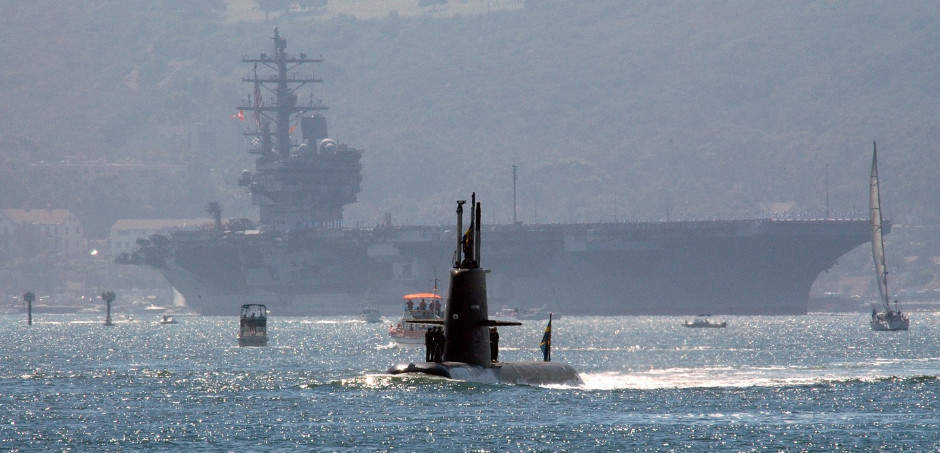
Swedish AIP equipped diesel-electric submarine Gotland with a US Navy aircraft carrier in the background. Exercises with the Swedish submarine made headlines and reinvigorated the nuclear-versus-diesel debate.
The arguments made for diesel boats (a submarine is always a ‘boat’ not a ship) generally focus on their low cost (compared to nuclear boats) and stealth. The topic arose at the U.S. House Seapower and Force Projection Subcommittee in March when three alternative Future Fleet Architecture studies were debated. There is an excellent write-up at the WAR IS BORING blog which makes the cost-vs-capability argument for adding diesel boats. It makes the point that the Japanese Navy’s Soryu Class boats cost around 20% of the US Navy’s Virginia Class SSN.
And the argument against diesel-electric submarines has come from many places. There is a justified fear that if the US Navy accepts that some diesel boats would be useful, they would be admitting that they don’t need so many nuclear boats. It follows that the submarine fleet would be cut and the cheaper and less capable diesel submarines would be forced to fill the holes, creating an inferior force to the one we have today. A variation of this argument is put forward by the US shipbuilding industry which fears that construction of diesel boats, even for export (e.g. to Taiwan) is an unacceptable risk to their ability to build the more expensive nuclear boats.
A more nuanced argument which may be popular among US Navy submariners is that diesel boats are simply too slow. Nuclear boats are much faster and can cross the Pacific or Atlantic in time to reach the action. As a strategic asset, submarines may be needed in any corner of the globe at short notice so speed counts. A fair point which we will come back to.
I polled my generally well informed Twitter followers and found that over half say ‘Yes’ to the question “Should the US Navy have a new class of diesel-electric submarine for Special Forces and littoral combat?”. Cunningly I started the poll in the morning European time to see whether there were differing views in Europe to US. There wasn’t, the balance of sentiments remained surprising stable throughout the voting period even after my US followers, many of them submariners, came online:

This article takes the form of ronin research which is masterless, and therefore free to challenge the conventional thinking on this topic, and highlight emerging capabilities which are beyond the scope of current planning. For the sake of this article we shall call the conceptual US Navy diesel submarine an SWS (Shallow Water Submarine), carefully avoiding the jinx of ‘Littoral Combat Submarine’ (LCS).
Core capabilities of a future US Navy diesel-electric boat
The argument for diesel submarines put forward in this article is not about cost, or stealth. It is about missing capabilities in the US arsenal.
Original artwork. CLICK for high-resolution image.
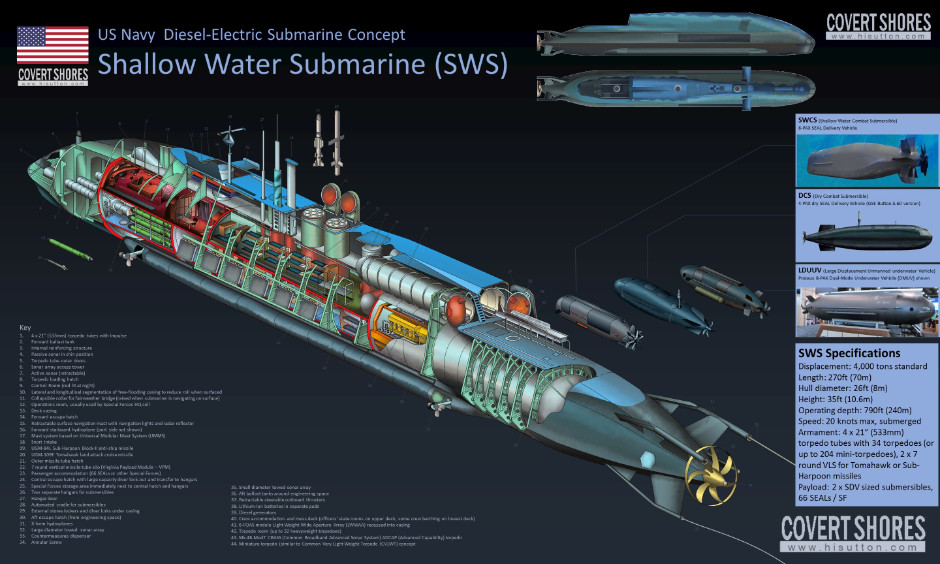
The ultimate book of Special Forces subs Covert Shores 2nd Edition is the ONLY world history of naval Special Forces, their missions and their specialist vehicles. SEALs, SBS, COMSUBIN, Sh-13, Spetsnaz, Kampfschwimmers, Commando Hubert, 4RR and many more.
Check it out on Amazon
Since the retirement of the diesel-electric USS Grayback in 1984 the US Navy has been without a dedicated special forces submarine. Grayback acted as a host submarine for SEAL Delivery Vehicles (SDVs) which could be carried in two integral hangars. She was replaced by a system of six detachable Dry Deck Shelters (DDS) which can be fitted to a number of specially modified attack submarines. Currently 10 Virginia and 3 Los Angeles Class nuclear powered attack submarines (SSNs) can each carry a single shelter and four Ohio Class guided missile submarines (SSGNs) can carry two each. The larger DDS and progressive updates in equipment do mean that the US Navy has the world’s leading Special Forces submarine capability. There are plans underway to increase the size of the DDS to accommodate the latest generation of SDVs. There are also plans to use the vertical Virginia Payload Modules (VPS) on future submarines to carry SDVs.
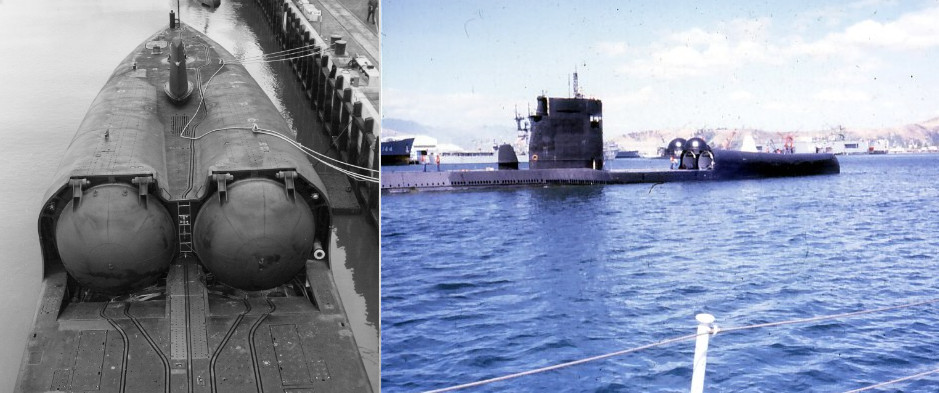
USS Grayback with twin integral hangars. Photo courtesy of the RAN Clearance Diver’s Association.
The Virginia Class are large submarines which are unable to operating in as shallow water as most diesel-electric boats. And the Ohio SSGNs are even larger at 560 ft (170 m). The new Virginia Block-IV will have a 70ft (21m) insert for extra vertical launch tubes making them similar in length to the SSBNs. The four twin-DDS Ohio Class SSGNs are due to be retired between 2026 and 2028, leaving only the single-DDS Virginias. This will lead to a diminishing SDV (/LDUUV) host submarine capability in the next 10 years (although the Virginia Block-IV’s could conceivably carry SDVs/LDUUVs in their vertical tubes).

USS Florida (SSGN 728) operating in the Mediterranean, 2014. The four modified Ohio Class SSGNs are impressive boats and can carry 66 SEALs, two SDVs plus 126 UGM-109E Tomahawk cruise missiles. With the DDS removed the Tomahawk load increases to 154. But their sheer scale is also their downside for inshore Special Operations.
Note that a discussion of USS Jimmy Carter’s unique capabilities which may or may not include this type of mission is beyond the scope of this article.
However the DDS system has several hidden drawbacks. Firstly the host submarines are very large and cannot operate close inshore. This is partially compensated by better ranges for SDVs which can be launched further from their target, and anyway the submariners don’t like bringing their boats too far inshore where they are more vulnerable. Secondly, the submarines cannot hover or sit on the sea bottom so launch and recovery of Special Forces has to take place in open water which adds complexity and, to an extent, increases risks for the personnel. And thirdly, as a result of the first two, US Navy submarines are less suited to deploying divers who use Diver Propulsion Devices (DPDs) which are smaller and cheaper than SDVs but also slower and use more effort. In themselves DPDs are no substitute for SDVs but having this capability for some occasions might increase the breadth of missions.
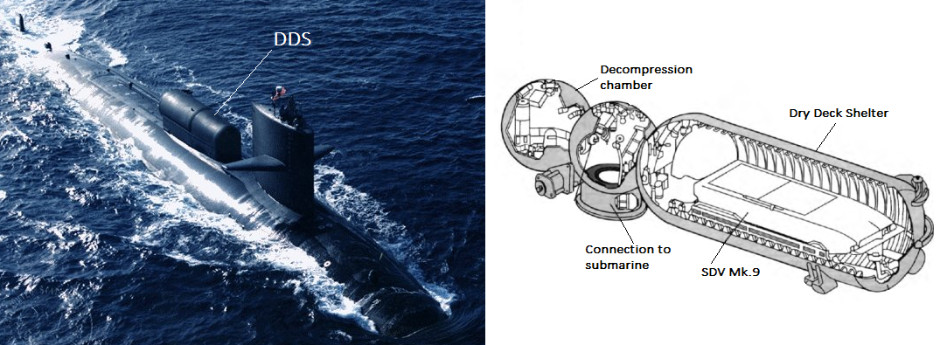
DDS
Another altogether subtler problem resulting from the DDS is that using it detracts from the submarine’s primary wartime capability of sinking enemy ships and submarines. DDS incur negligible penalties on the host submarine but the Special Forces mission diverts their attention and may impose restrictions on attacking enemy ships if they are spotted as to do so might blow the cover of the SF mission. Therefore Special Forces fear that the host submarines may not be made available in a full conflict scenario.
The SWS is therefore primarily a Special Forces submarine, there for USSOCOM (US Special Operations Command) even during the hottest shooting wars. And she would take them much closer to their targets, reducing the drain of long journeys in SDVs.
However, she would also be equally suited to ISR (Intelligence Surveillance and Reconnaissance), attacking enemy ships which hug the coast to avoid the larger SSNs out to sea, and contribute to the destruction of land targets with cruise missiles or future submarine launched missiles (loitering UAVs etc).
Importantly the handful of SWS (2-6) would be in addition to the existing fleet of SSNs and SSGNs, not as a replacement.
And the SWS would be suitable for export, for example to the UK (who have no money), Netherlands or Taiwan.
Shallow Water Submarine (SWS)
Working backwards from the dimensions of various elements we would want to include, the SWS is approximately 230 ft (70m) long and 32 ft (10.6m) tall overall. The pressure hull is 8m in diameter allowing for three decks with a generous headroom. Displacement is in the region of 4,000 tons which is at the top-end of diesel-electric submarines. Compared to the US Navy’s current Virginia Class block-III nuclear powered submarine the SWS is just 60% of the length, 80% of the hull diameter and about half the displacement.
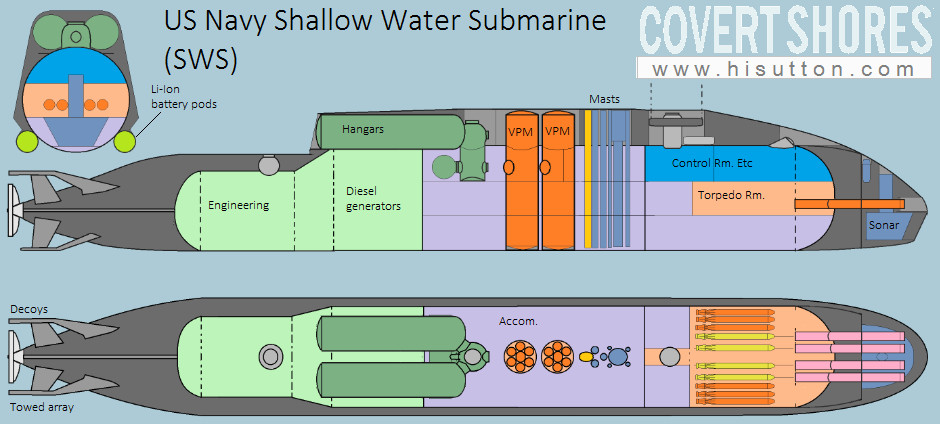
Illustrative design only
The most distinctive feature is that the SWS is a sailless design. This has been a recurring theme in submarine design with both US and Russian studies, previously held back by the mast requirements of previous generations of boats. This would have hydrodynamic advantages but the main reason in the SWS’ case is to reduce the overall height of the boat, allowing it to operate in shallower water. It is in fact lower than most two-deck diesel-electric submarines which have a sail. For surface navigation a collapsible collar would be fitted similar to those on the DCS (Dry Combat Submersible) currently entering service with USSOCOM. Overall however, the fairweather sail can be seen as a luxury which although it will be missed, the SWS will be better off without.
The sail can be removed thanks to the use of electro-optical masts instead of traditional periscopes which means that the masts no longer have to be in the control room. Combined with an expectation that other mast functions can be more compact than on previous generations of submarines, all the masts can be buried with the hull. The masts would employee a degree of modularity similar to the Universal Modular Mast System (UMMS) on the Virginia Class. However, compactness would reign over modularity.
Original artwork. CLICK for high-resolution image.

Note that the illustrated paint scheme is inspired by the mid-sea blue upper surfaces currently used by NAVSOC combined with the pattern used by US Navy submarines involved in Special Operations in Vietnam – old and new.
The control room and operations room can therefore be moved well forward into the front of the pressure hull, eliminating through traffic. The captain’s periscope stand would be completely removed with monitors being used instead. A fallback miniature electro-optical periscope display would be provided for low-power situations. Modern flat-screen monitors, small computers and increased automation would reduce the bulk of the control room stations. This would contribute to reducing the size of the control room overall but it would also translate into much more space. The operations room(s), primarily for coordinating Intelligence and Special Forces missions would be immediately behind the control room, and the captain’s cabin, ward room etc behind that on the upper deck.
The overall height of the boat, 32 ft (10.6m), allows for vertical launch containers. These are based on the VPM (Virginia Payload Module) with only minor modifications. This gives the boat a 8ft (2.6m) deep casing on top, allowing room for access trunks, mast heads etc.
Although the hull is technically of single-hull construction (with the reinforcing frames inside the hull), the casing is extended down to a chine running along the lower hull, giving an appearance similar to a double hull boat. This is intended to reduce the active-sonar cross-section while also allowing the fairing-in of the side-mounted sonar arrays and larger-diameter towed sonar array tube. The central section area of casing besides the Vertical Payload Modules (VPMs) would contain ballast tanks similar to the saddle tanks on World War Two fleet boats. Together with the main ballast tanks fore and aft, these would contribute to increased levels of reserve buoyancy to compensate for the relatively large hangars.
Hangars
Faired-in under the casing are two integral hangars. Experience on US Navy submarines equipped with DDS has proven the advantage of having twin hangars so this is considered default for SWS. These are positioned facing aft like the current DDS so that they can be used which the boat is underway (unlike hangars in the bow facing forward like giant torpedo tubes). The hangars are also right on top of the submarine so there is the minimum depth of water above them. This can reduce the depth that the divers are operating at which reduces risks.
Although distinct, the hangars would be similar enough in size and configuration to minimize cross-training from the existing extended DDS now entering service. One advancement, over time, would be increasing automation in launch and recovery.
Like on the current DDS there is a transfer trunk between the submarine and the hangar and a hyperbaric chamber for diver compression/decommission. This is inside the hull of the submarine making it easier to monitor the divers inside. And above decks diver lurks and wet storage space could be incorporated between the hangars.
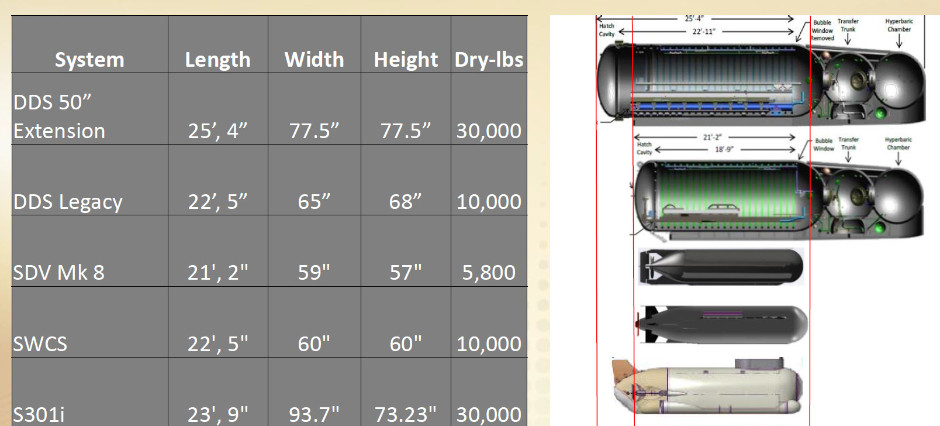
Current DDS layout. On the SWS a single transfer trunk serves both hangars, and the hyperbolic chamber is cylindrical and inside the submarine’s hull. Source USSOCOM.
The hangars would primarily contain the latest generation of SDV, the Shallow Water Combat Submersible (SWCS). At 30ft long they can also accommodate the smallest types of Dry Combat Submersible (DCS) and Large Displacement Unmanned Underwater Vehicles (LDUUVs). Or the hangars could be used for launching inflatable boats or for mass diver lock-outs per current DDS. Or for launching ASOC kayaks for up-river infiltration.
 SWSC (Shallow Water Combat Submersible) main article
SWSC (Shallow Water Combat Submersible) main article
 Dry Combat Submersible (Button 5.60) main article
Dry Combat Submersible (Button 5.60) main article
 Proteus DMUV main article
Proteus DMUV main article
Unlike an SSN with a DDS, the SWS can get closer inshore which would be a great help to the Special Forces, especially for agent insertion where smaller DPDs or Surface Boards might be preferred.
Propulsion
The current trend is toward Air Independent Power (AIP) with only a few countries, notably Australia, shunning it for diesel-electric boats. AIP allows a submarine to cruise at slow speed for long periods (days or weeks) without snorting to run the diesels. AIP does not charge the batteries however (exceptional circumstances aside, this is a common misconception) and it is very slow.
Although the US has not established AIP capabilities there are US companies capable of producing fuel cells, and the Spanish Navy do plan to deploy some US fuel cell equipped AIP submarines (admittedly there are delays). So the US Navy could conceivably use fuel cell technology for an AIP submarine.
SWS however would not be an AIP submarine. Instead she’d take advantage of improvements in Lithium-Ion technology to simply get much more out of her batteries. This is an approach which the Japanese are taking and fuel cells are increasingly common on smaller submersibles. As well as better performance, they are more compact and the small size of individual cells allows them to be molded into different shapes, making the overall package much more compact in a submarine setting.
The concern with Li-Ion batteries however is heat. Batteries fires are constant hazard on submarines and the likely higher risks with Li-Ion batteries make their use inside submarines unpalatable. The answer is to put them outside the pressure hull instead. The SWS has two battery pods either side of the lower hull. This would increase drag, but would minimize the risks of batteries cooking-off. This is actually similar to using fuel cell AIP where the compressed gas would ideally be carried outside the pressure hull, for example on the Israeli Dolphin-II submarines.
The battery pods would actually be a series of smaller sections which would individually be close to neutrally buoyant, allowing divers to replace them without bring the boat in to dry dock. The fairings at either end of the pods would house pop-out steerable thrusters allowing the submarine to hover or maneuver at very low speeds.
Armament
Two Vertical Payload Modules (VPM), almost identical to those fitted to the Virginia Class Block-III (known as Virginia Payload Modules) and modified Ohio Class SSGNs allows 14 UGM-109E Tomahawk cruise missiles to be carried (2 x 7). UGM-84L Harpoon Block-II anti-ship missiles, Unmanned Underwater Vehicles (UUVs) and other missile payloads could be carried in their place. Alternatively, the VPM could be configured as a vertical SDV or LDUUV hangar although this is not seen as advantageous compared to the integral horizontal hangars.
It could be argued that the SDV/UUV hangar potential of the VPM removes the need for dedicated hangars. The disadvantage is that it then becomes a choice, and one which Special Forces would frequently lose. The dedicated hangars ensure that there is always a submarine ready to carry Special Forces even when strike capability is also high priority.
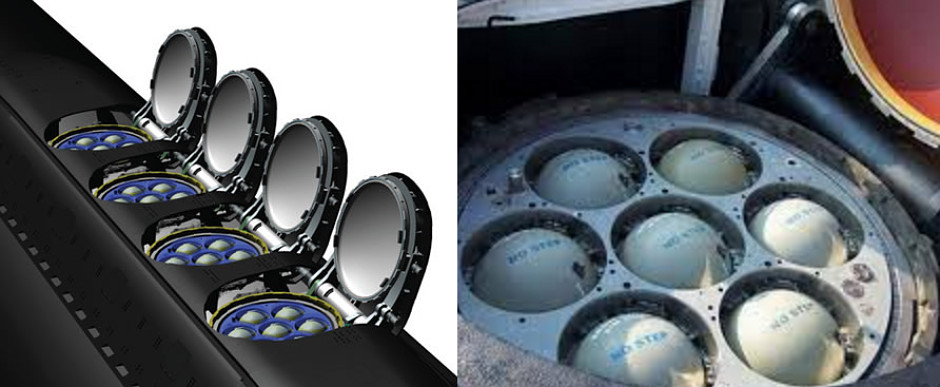
The SWS will have two 7-round vertical launch tubes based on the Virginia Payload Module (VPM).
There is an argument that torpedo rooms are obsolete and that the SWS could rely solely on its VPMs, or that all improvements in weapon reliability will allow maintenance-free sealed external tubes. However there is still a compelling flexibility afforded by a conventional torpedo room with standard impulse torpedo tubes.
The spacious torpedo room has space for 28 Mk48 torpedoes or missiles (plus four in the tubes). This is almost the same as on the much larger Virginia Class, and slightly less than the similar sized Japanese Sōryū Class. Realistically the SWS would deploy with fewer weapons, and some (but not all) torpedoes could be swapped for missiles (Tomahawk, Harpoon etc). However when combined with the two VPMs this results in a massive punch for a submarine this size.
Thanks to the more compact horse-shoe array sonar the four torpedo tubes can be configured facing directly forwards allowing a much cleaner rack configuration compared to current US Navy submarines which have angled flank tubes. This allows a torpedo to be moved from either port or starboard (left or right) racks to any of the torpedo tubes. Torpedoes can be moved over the top of the upper row on the rack, allowing any variation of shuffling of weapons. Said another way, if a weapon in any position on the racks can be moved to any torpedo tube without obstruction, although some shuffling would be required in most cases. The racks would be optionally-automated with crewmen still used to supervise the process. Fully automated rack systems such as on some Russian submarines could be used but I feel that there is still some advantage to having a human in the loop.
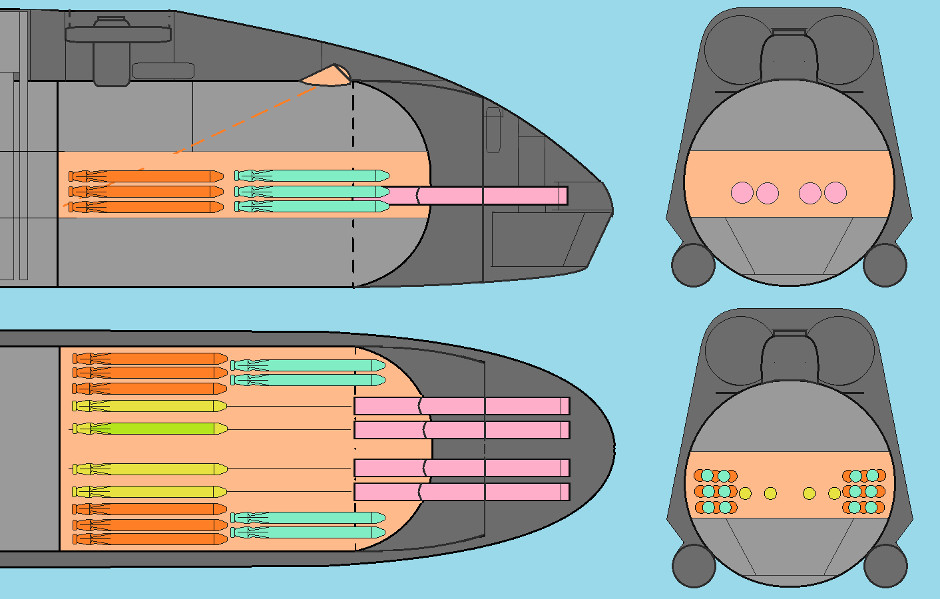
SWS torpedo room configuration with 34 torpedo-sized weapons.
SWS could take advantage of future generations of smaller weapons. Currently submarines primarily carry 21” (533mm) heavyweight torpedoes with the Mk48-Mod7 CBASS (Common Broadband Advanced Sonar System) ADCAP (Advanced Capability). These are highly effective but take up significant space. New smaller weapons, exemplified by the US Navy’s Common Very Light Weight Torpedo (CVLWT) add an extra dimension to SWS’ capabilities as well as freeing space in the torpedo room for other systems such as UUVs, extra berthing or Special Forces equipment storage.
The CVLWT was just 6.75” (171mm) in diameter, 9 ft (2.7 m) long, and 30% the weight of the Mark 46 lightweight torpedo. Potentially SWS could carry 6 to 8 CVLWTs in place of a single heavyweight torpedo. A weapon the size of the CVLWT would not be a 1:1 replacement for a regular 21” (533mm) torpedo, but could be more suitable for some inshore targets such as patrol boats and small commercial vessels which might not warrant a heavyweight torpedo. And, by virtue of its size, greatly increase the number of weapons carried. There is also the suggestion that weapons in this class could provide a less-than-lethal capability where a target vessel could be disabled. The smaller size could also allow better space optimization in the torpedo room.
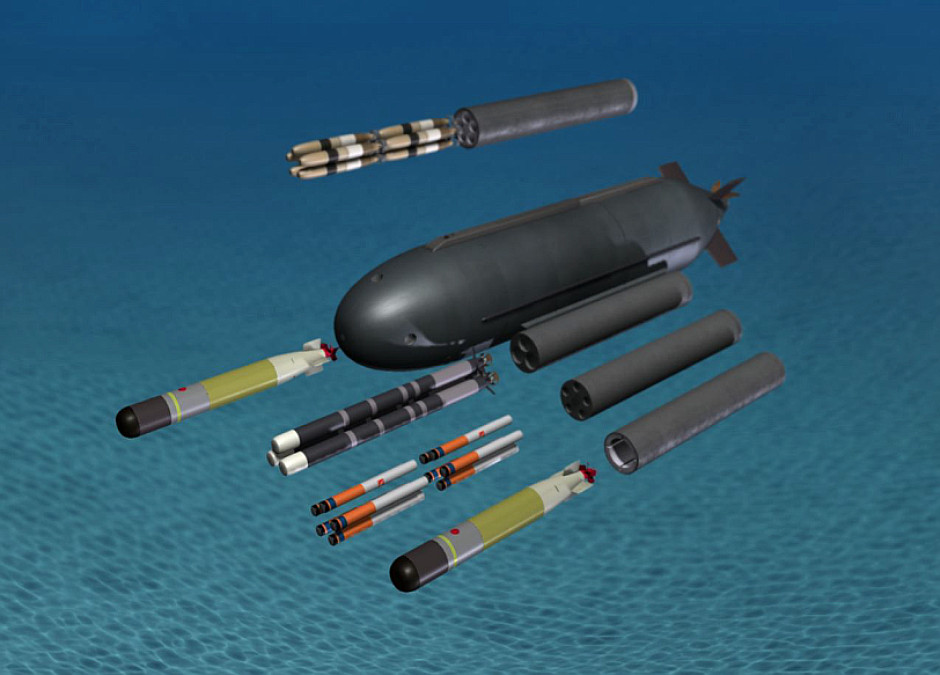
Sub size weapons,, shown here with a Proteus Dual Mode Underwater Vehicle (DMUV). The triple-launched weapons inboard are the Common Very Light Weight Torpedo (CVLWT)
Boeing recently patented (HERE) an anti-submarine warhead for mini-torpedoes (scout.com). Their intention is to allow ASW torpedoes to be launched from Unmanned Air Vehicles (UAVs). Instead of using a shaped charge, the concept has a contact and attachment assembly that attaches the torpedo to a ship so that flammable ‘thermal lance’ can cut a hole through the hull. This has yet to be prototyped and may be less suited to some submarines with double hulls and non-magnetic Anechoic tiles. However it points to a near future where sub-sized torpedoes will be much more deadly than the current generations.
Crew readiness
A combination of the relatively large hull diameter, high ceilings (so that piping can mostly be laid in the floor spaces) and moving of the batteries into external pods leaves a generous amount of space for crew and passengers. US Navy submarines have traditionally had large crews to ensure combat readiness but modern advances in automation will at last see the submarine crew shrinking to be closer to regular diesel submarines in service around the world. The crew would be slightly bigger because of the additional weapons systems carried. However, the overall personnel size would be quite large because of approximately 66 SEALs and related personnel.
Crew berthing would be up to the latest standards with mixed-gender crew facilities built in. There would be exercise areas (especially important for the SEALs) and entertainment systems would be built in (partly compensating for the necessarily strict rules re internet access).
Performance
A diesel-electric SWS is invariably slower than an SSN with a maximum speed of approximately 65% that of the Virginia Class. Additionally, the endurance at full underwater speed would be relatively short because it would drain the batteries, unlike the nuclear boat whose endurance is much less a factor of speed (because it has practically unlimited fuel). The main limitation this brings is operational range and time taken to get to the operating area. The SWS would have to cruise at approximately 50% or less of the SSN’s typical transit speed and snort regularly to allow the diesels to recharge the batteries. During this time she would be susceptible to detection thanks to an increased acoustic, radar, chemical and infrared signature.
The snorting problem is hard to overcome even with the latest lithium-ion batteries. Submarines with Air Independent Power (AIP) do not have to snort for very long periods but they have to operate at incredibly slow speeds while using AIP so it is a solution to patrolling, not to transit. Additionally they may have to snort for brief moments to replenish breathing air.
A more radical approach employing gas turbines for surface travel was proposed by British firm BMT Defence. Their SSGT design incorporates a Rolls Royce gas turbine into the sail allowing it to cruise >6,000 nautical miles at 20 knots. Separately French firm DCNS proposed the SMX-25 design using a similar principle. This was more of a submersible warship than a regular submarine.

BMT SSGT left, and DCNS SMX-25 right
Turbine assisted submarines are not fundamentally more stealthy than a regular snorting submarine however and either design has received further development.
The answer to this problem lies in operational rather than technical details. It could be substantially offset if the boats were forward deployed to minimize the transits required to and from patrols. For example two could be based in the Mediterranean to operate in MENA (Middle East and North Africa), two in East Asia to address China and North Korea, and two in Europe to cater for the Baltic.
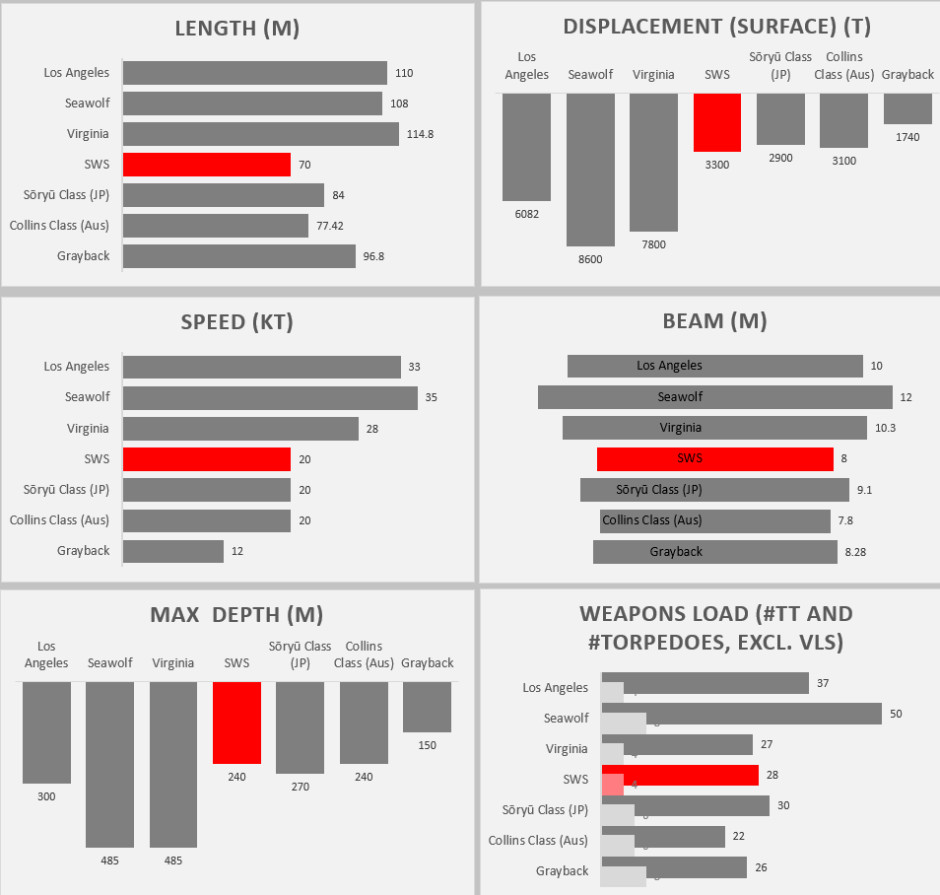
Another willing compromise is on operating depth. US Navy SSNs are comparatively deep diving which requires special steel and even more careful construction. Being intended primarily for inshore operations the SWS would be build of comparatively less expensive steel and have an operating depth similar to other diesel-electric submarines in service with other countries.
Cost
Being smaller and constructed to lower specifications the SWS would be cheaper than an SSN. It is much larger than typical diesel-electric submarines, so the eventual price tag might be approximately 33% of an SSN (Soryu Class being about 20%). Said another way, a fleet of 6 SWS would set the US taxpayer back by about the same as 2 Virginia Class submarines.
Many components would be borrowed from the Virginia Class to reduce development costs. For example the flank sonar would use Fiber-Optic Acoustic Sensor (FOAS) modules from the Lightweight Wide Aperture Array (LWWAA). The Virginia Class has three 8-module arrays either side of the hull (total 48 modules) while the smaller SWS would have just 10-12 modules. Another reuse from the Virginia Class would be the vertical launch tubes (Virginia Payload Modules).
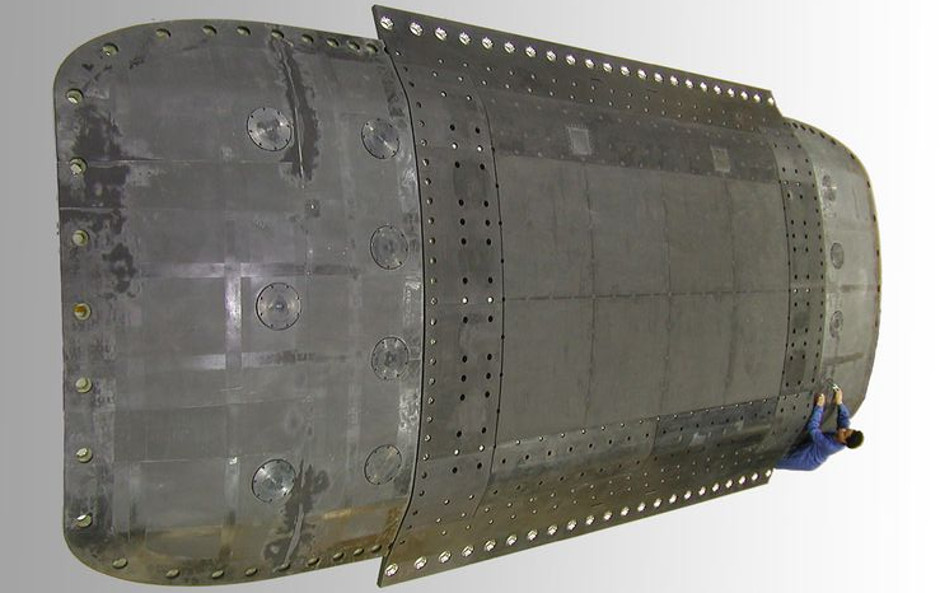
An 8-FOAS module Light Weight Wide Aperture Array (LWWAA) from Northrop Grumman. The SWS would use fewer modules which would be embedded into the outer casing to minimize drag.
Core crew levels will be much lower than existing US Navy submarines, and the engineering will require less specialized training, greatly reducing operating costs.
Non-structural outer casing panels would be GRP (Glass-Reinforced Plastic) which would also reduce top-weight and replacement costs. The main propeller would be an annular-screw instead of the more expensive propulsor (pump jet) used on the latest US Navy SSNs. Ideally the blades of the screw would be individually replaceable, ideally by divers so that the boat wouldn’t have to be brought into dry dock for propeller replacement.
The steel used would be cheaper and smaller diameter hull would require less specialist space than the SSNs. Additionally the boat would have some export potential to help offset the costs.
Related articles















 World survey of AIP submarines
World survey of AIP submarines

 SDV Mk.9 SEAL Delivery Vehicle
SDV Mk.9 SEAL Delivery Vehicle

 Wholphin X2, Dolphin X1 and Piranha SDV-X
Wholphin X2, Dolphin X1 and Piranha SDV-X


 Lockheed S301i, S351 and S302 Dry Combat Submersibles
Lockheed S301i, S351 and S302 Dry Combat Submersibles


 USN Navy SEAL's UOES3 (Button 5.60) Dry Combat Submersible (DCS)
USN Navy SEAL's UOES3 (Button 5.60) Dry Combat Submersible (DCS)

 Proteus advanced SDV
Proteus advanced SDV

 SWSC (Shallow Water Combat Submersible) US Navy SEALs next gen' SDV
SWSC (Shallow Water Combat Submersible) US Navy SEALs next gen' SDV

 Naval Spetsnaz in Hybrid Warfare (Russian SDVs and DPVs)
Naval Spetsnaz in Hybrid Warfare (Russian SDVs and DPVs)


 CCH (Combat Craft Heavy) SEALION and Alligator Semi-Submersible Boats
CCH (Combat Craft Heavy) SEALION and Alligator Semi-Submersible Boats
 Special Forces Jet Skis
Special Forces Jet Skis

 USS Parche spy sub par-excellence
USS Parche spy sub par-excellence

 Barbel Class - the last front-line diesel boats int the US Navy
Barbel Class - the last front-line diesel boats int the US Navy

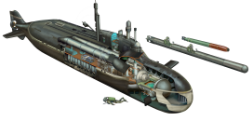 Piranha Class (LOSOS) midget sub
Piranha Class (LOSOS) midget sub

